We started with our sightseeing of Ouro Preto from above, since the coach terminal is located on one of the hills surrounding the centre. From there we passed by the beautiful Church of Saint Francis of Paula (Igreja de São Francisco de Paula) and this is where the flat area ended. Namely, the town was built on the frequently very steep slopes and in order to visit the place it is necessary to do a lot of walking up and down.
Thus, we first saw “from above” a smallish square and the Basilica of Our Lady of Pilar (Basilica de Nossa Senhora do Pilar) and then we walked down to it.
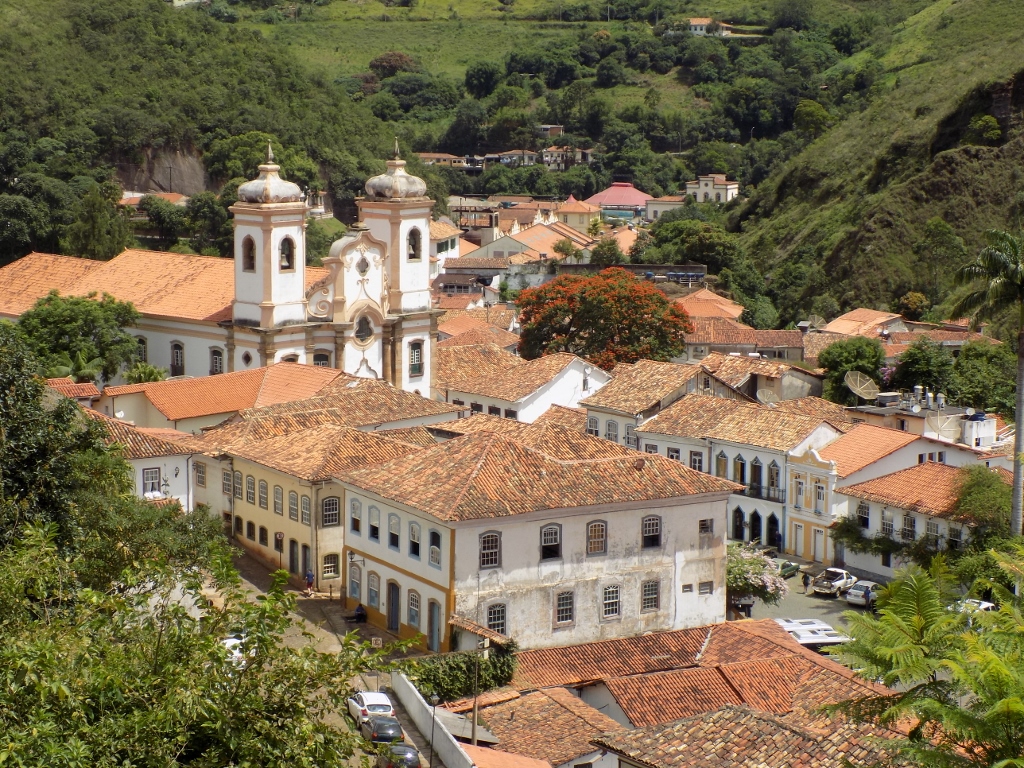 View at the Basilica of Our Lady of Pilar from an elevation
View at the Basilica of Our Lady of Pilar from an elevation
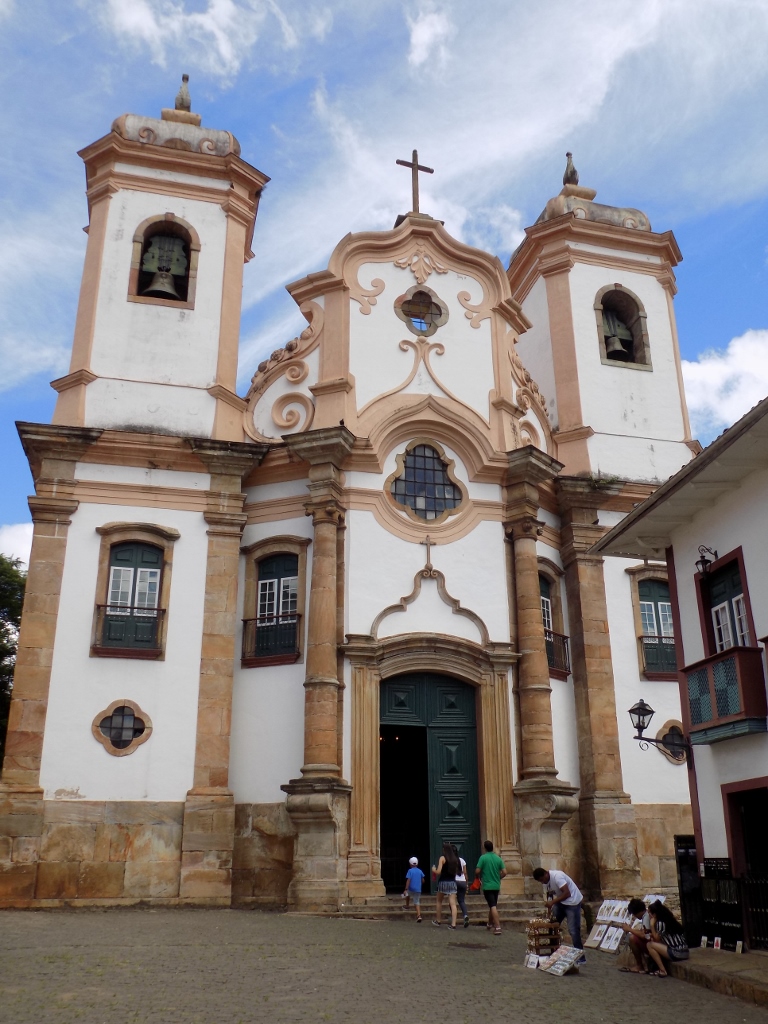 Basilica of Our Lady of Pilar
Basilica of Our Lady of Pilar
The interior decoration of this church is the second most opulent in Brazil. No wonder since it belonged to Pilar parish which was one of the wealthiest in the town.
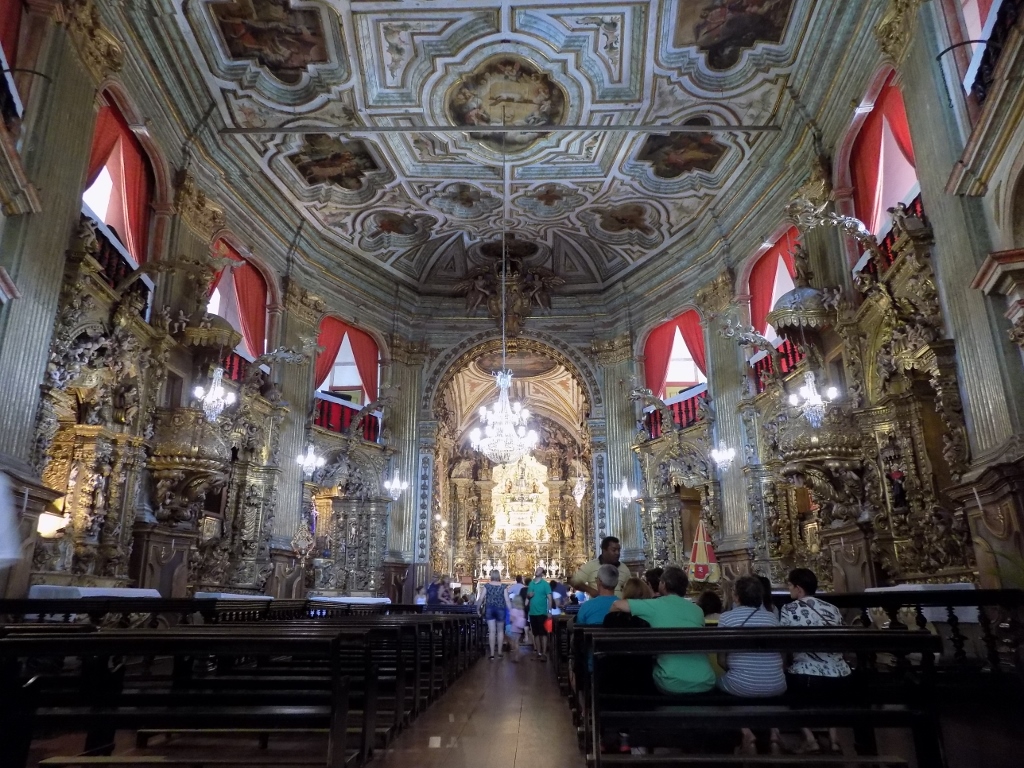 Basilica of Our Lady of Pilar, the interior
Basilica of Our Lady of Pilar, the interior
Originally, when it was first founded at the end of the 17th century, Ouro Preto was named Rich Village (Vila Rica), but apparently this did not sound good and rich enough, so the town was renamed into Ouro Preto which means black gold. The reason for this a little unusual name is that the gold that was found here was covered by some dark matter. The first lumps that were found in some river in the area were clearly some metal, but they were black and it was only a little later that it was discovered that this was in fact gold. The gold rush that ensued after this accidental discovery reached its peak in the 18th century. By the way, Ouro Preto was the capital of Minas Gerais Province from 1720-1897. Today, this is Belo Horizonte.
After we had visited this church, we headed for the centre, i.e., Tiradentes Square, but first we had to climb there.
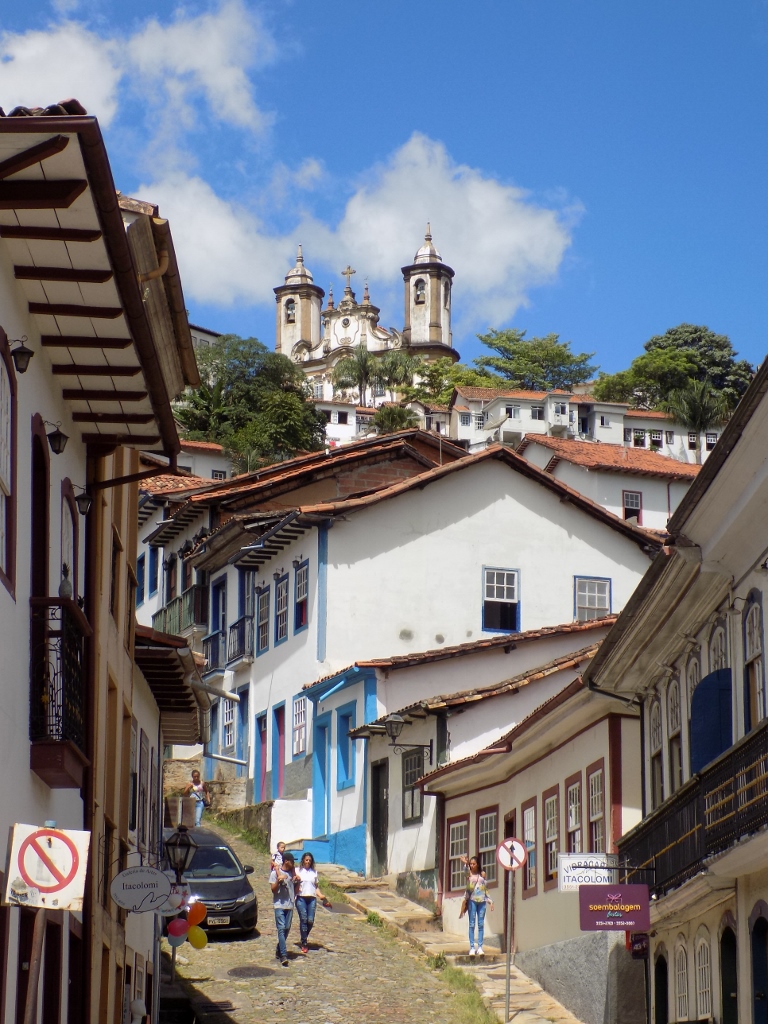 The slope in front of us; Church of Our Lady of Mount Carmel is on the top
The slope in front of us; Church of Our Lady of Mount Carmel is on the top
Breathless after climbing uphill on a hot day, we reached the central square that has the shape of an elongated rectangle. On its two ends there are two museums – Museum of the Inconfidência (Museu da Inconfidência) on one end and Museum of Science and Technology (Museu de Ciência e Técnica) on the other. We agreed to leave the visits to the museums for later.
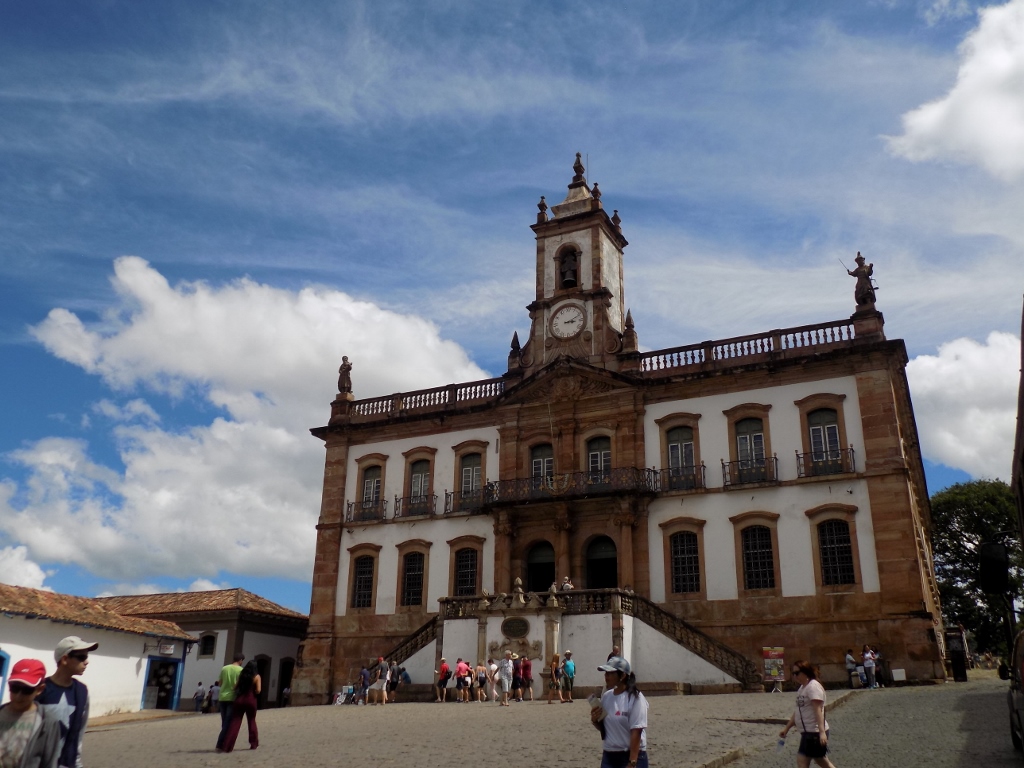 Museum of the Inconfidência in Tiradentes Square
Museum of the Inconfidência in Tiradentes Square
Then we went to the nearby Church of Our Lady of Mount Carmel (Igreja de Nossa Senhora do Carmo).
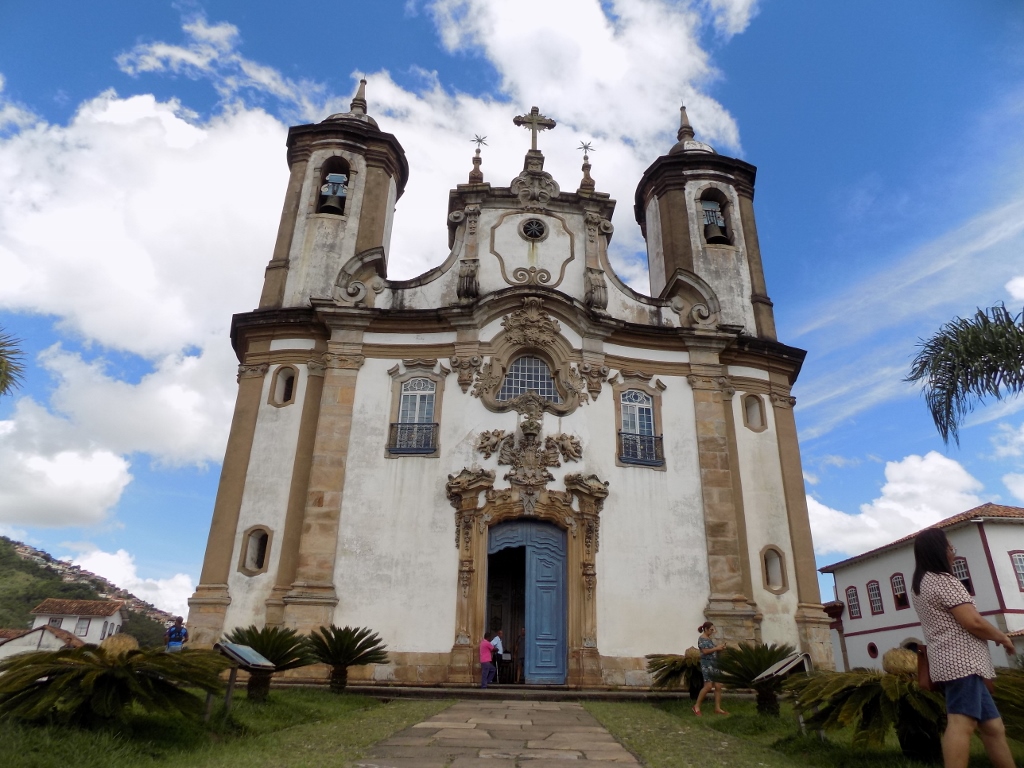 Church of Our Lady of Mount Carmel
Church of Our Lady of Mount Carmel
This church was built between 1766 and 1772, and among other things it is known for its two side altars and the facade done by Aleijadinho. This was where we started to get acquainted with the work of this Brazilian architect and sculptor from the 18th and the 19th centuries.
It was precisely the next church we visited that is particularly well known and linked to the name of Aleijadinho. This is the Church of St Francis of Assisi (Igreja de São Francisco de Assis) built in the second half of the 18th century according to the design of Antônio Francisco Lisboa which is the real name of this architect and sculptor. By the way, I’ll say a little more about this fascinating artist when I write about our visit to the town of Congonhas.
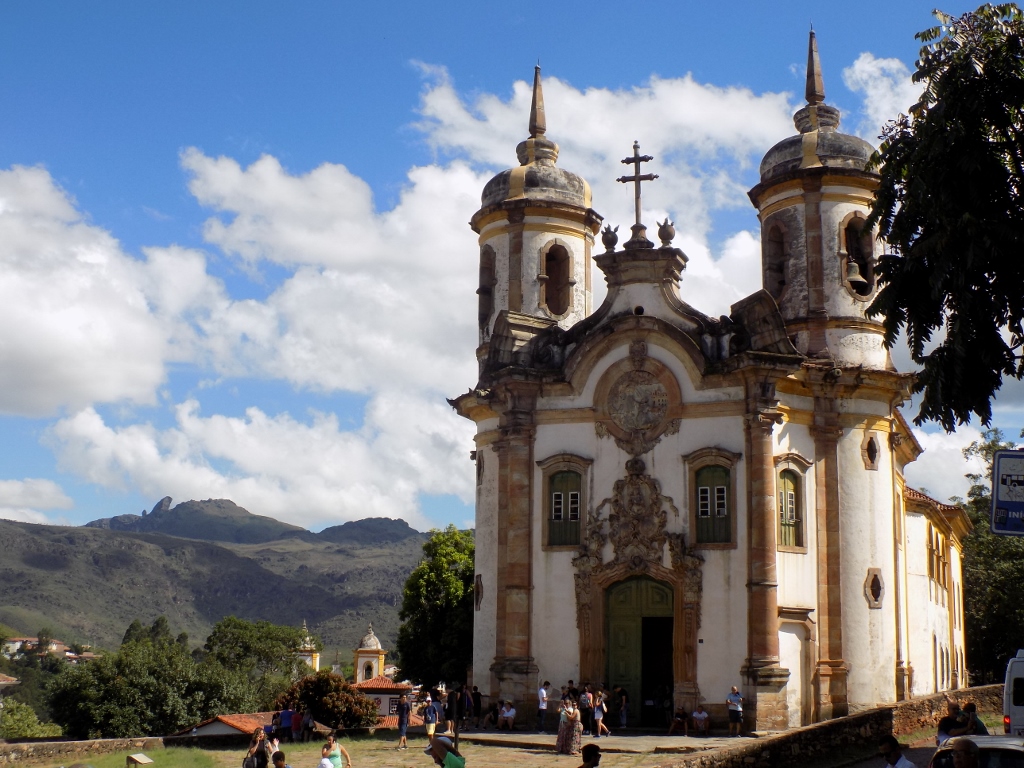 Church of St Francis of Assisi
Church of St Francis of Assisi
It was Aleijadinho himself who also did the Franciscan double cross that rises above the main door to the church, as well as the soapstone medallion that shows St Francis receiving the stigmata and a very imaginative waterspout in the shape of a cannon bore.
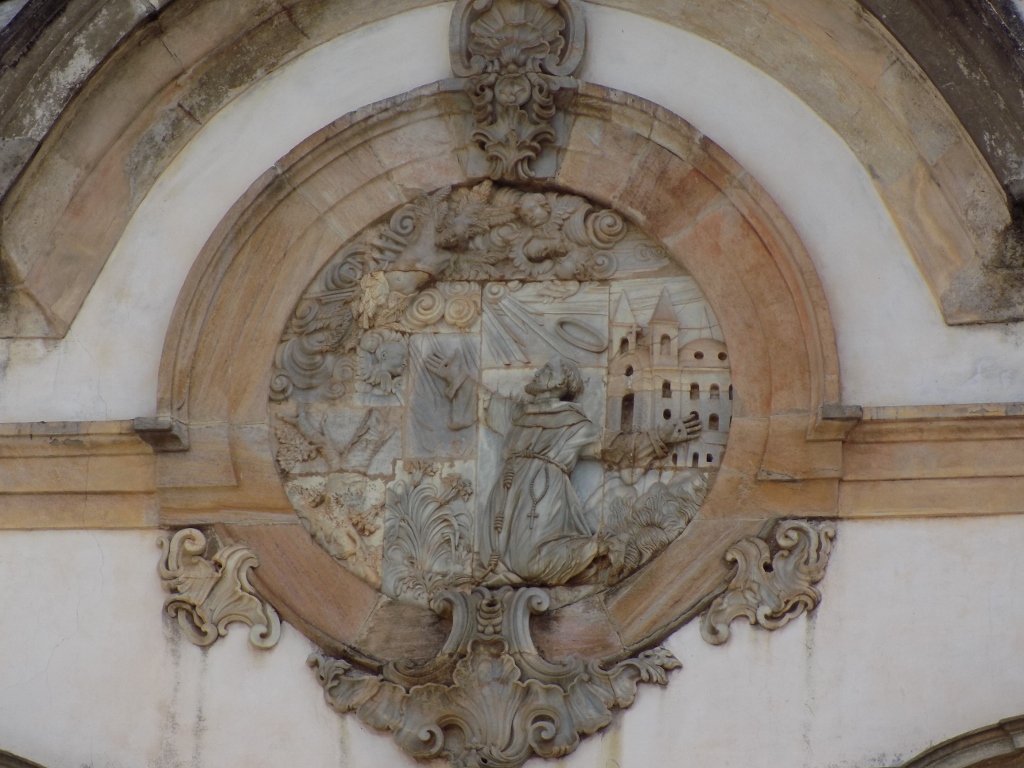 Church of St Francis of Assisi, the medallion
Church of St Francis of Assisi, the medallion
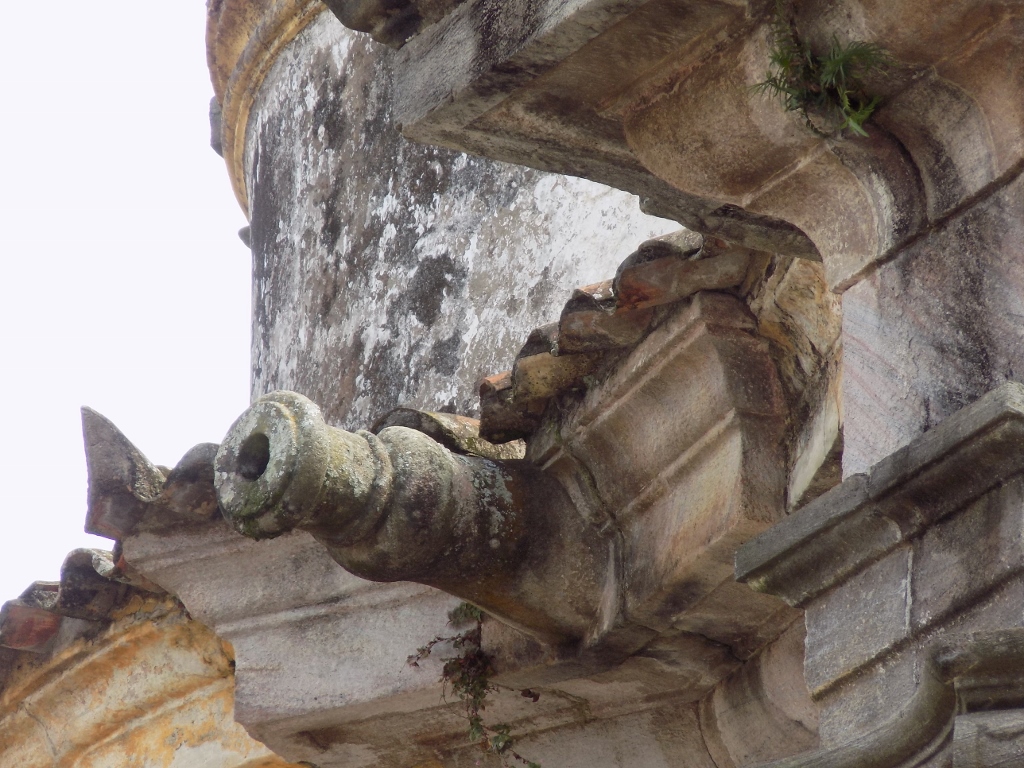 Church of St Francis of Assisi, the waterspout
Church of St Francis of Assisi, the waterspout
In the interior, particularly interesting is a composition on the wooden ceiling done by Aleijadinho’s painting partner, Manuel da Costa Ataide.
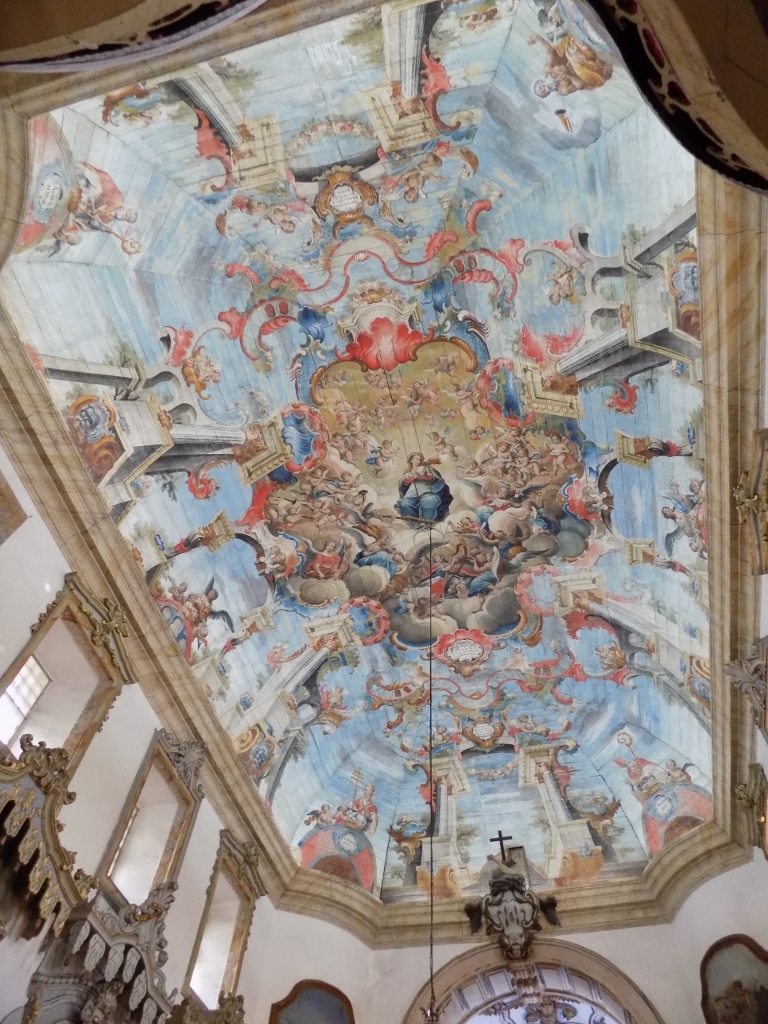 Church of St Francis of Assisi, the interior
Church of St Francis of Assisi, the interior
Then we continued towards the Church of Our Lady of Conception (Igreja Matriz Nossa Senhora da Conceição) built between 1727 and 1770 according to the design done by Aleijadinho’s father, while Aleijadinho himself was buried in this church. By the way, this most famous Baroque artist in Brazil was born and died in the same town which during the artist’s life was still called Rich Village (Vila Rica).
In order to get to this church, we had to go downhill again and in the distance we could see a couple of other churches that seemed interesting, but Sneža and I agreed that they were too far away and too uphill in order for us to go there.
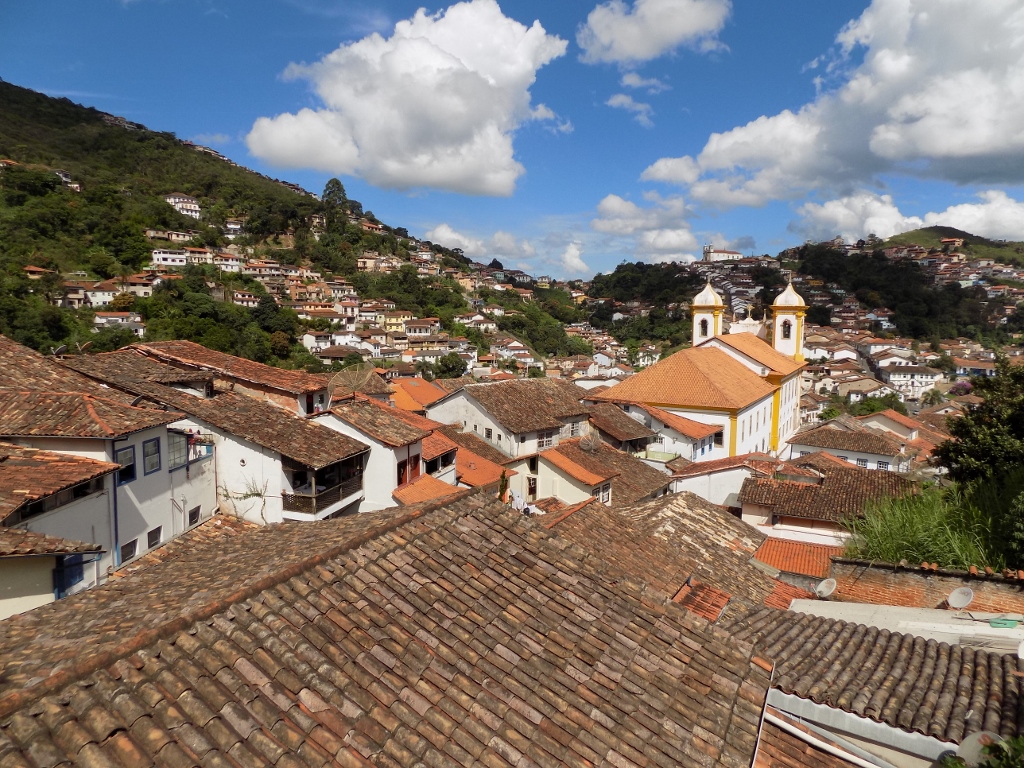 Roofs of Ouro Preto, the Church of Our Lady of Conception, as well as other, interesting parts of the town
Roofs of Ouro Preto, the Church of Our Lady of Conception, as well as other, interesting parts of the town
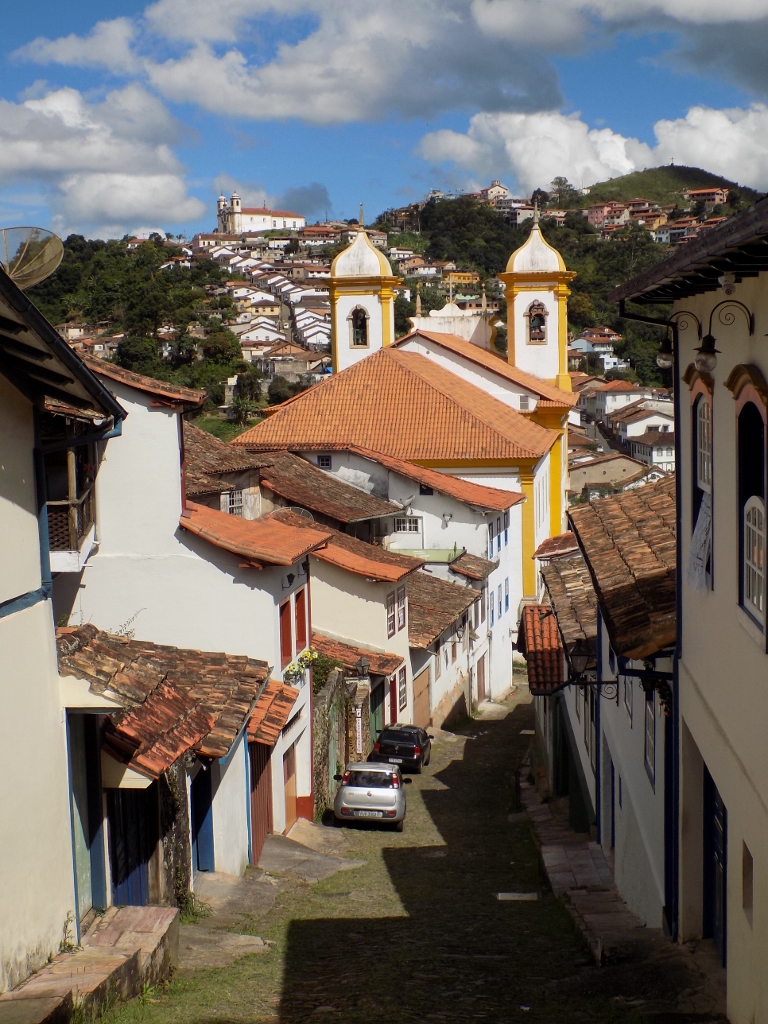 Street going down towards the Church of Our Lady of Conception
Street going down towards the Church of Our Lady of Conception
Although we were worried by the fact that we would have to go uphill later on, we did get to the church, but it was unfortunately closed.
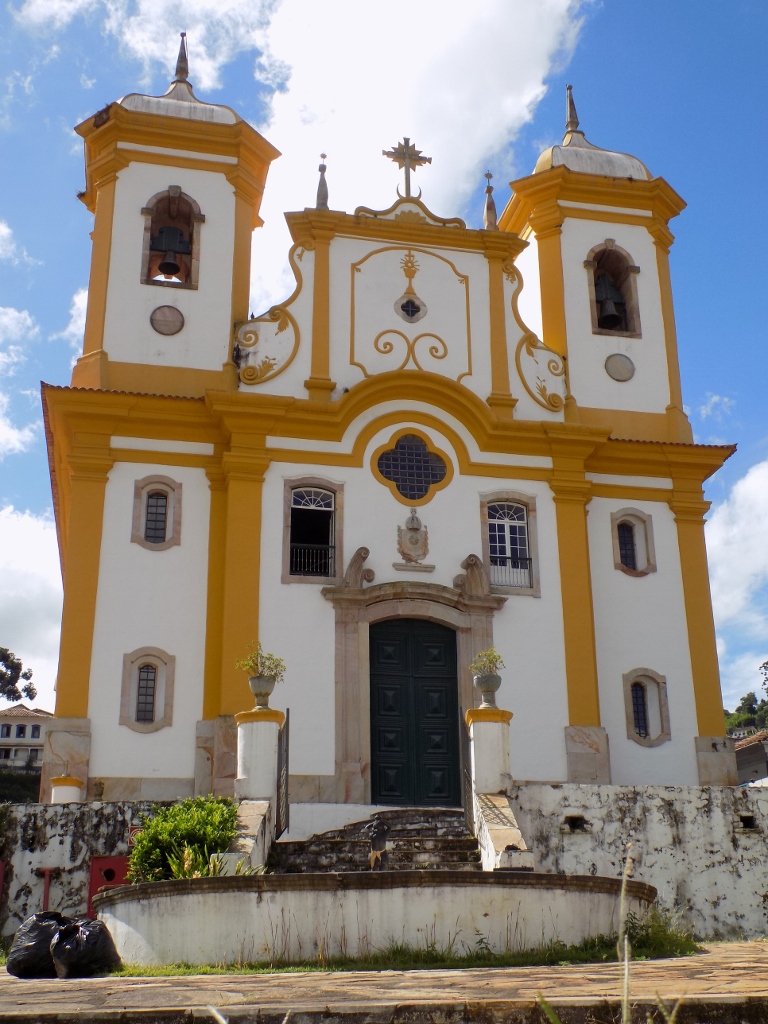 Church of Our Lady of Conception
Church of Our Lady of Conception
As we went uphill again, we often made breaks in order to rest a little and I took advantage of these breaks for wistfully looking back towards one of the churches we were not to see from up close.
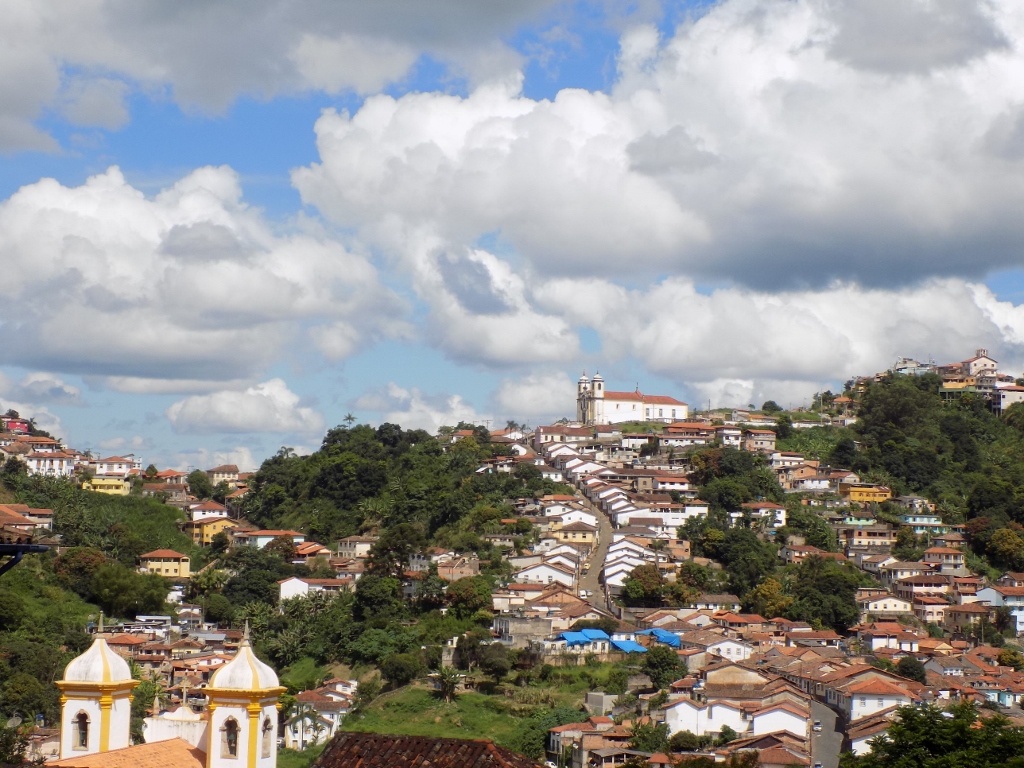 View at the parts of Ouro Preto we did not visit
View at the parts of Ouro Preto we did not visit
One of the churches we did not visit was the Church of St Ephigenia and we also did not see the remains of a mine that belonged to the first abolitionist in Brazil named Chico-Rei. The legend passed through time about his life is completely fascinating. As the story goes, at the beginning of the 18th century, an entire tribe along with their king were caught in Africa, transported to Brazil and sold to the owner of a mine in Ouro Preto. The king of the tribe, who was in the meantime named Chico-Rei, worked as a foreman for the boss, but since he worked Sundays and holidays, after many years he managed to save money and buy his own freedom. He continued to work though and then he also bought the freedom for his son. And then the two of them continued to work together and, a bit by bit, they bought the freedom of their entire tribe. The next step was when the entire tribe, as a cooperative, bought a very good gold mine and became rich enough to build precisely the Church of St Ephigenia, while Chico-Rei could go back to the function of being the king of his tribe, including public celebrations of their traditional holidays. Admittedly, when the “King-in-Chief”, i.e., the King of Portugal heard of such events, he simply issued an order effectively prohibiting slaves from buying their freedom in the future.
When we went back to the top of the hill we were walking on, we reached the main square in which there is a monument to Joaquim José da Silva Xavier better known by the name of Tiradentes which also renders the name to the entire square. By the way, the man got his nickname because he was apparently very good at pulling teeth (tirar - pull out + dentes - teeth).
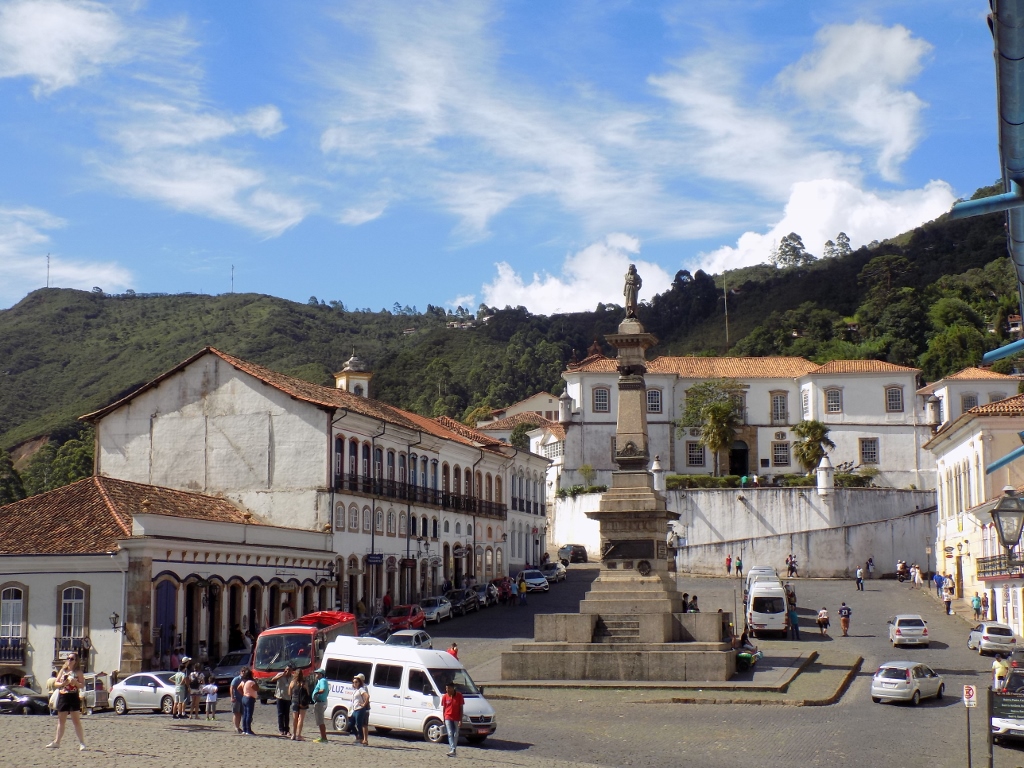 Square and monument of Tiradentes; up, at the end of the square there is the Museum of Science and Technology
Square and monument of Tiradentes; up, at the end of the square there is the Museum of Science and Technology
Tiradentes is one of the most famous historical figures in Brazil. Namely, a plot was organised in 1789 with the aim to free Brazil from the Portuguese authority and to gain independence of the country. The plot was crushed and the main organisers were killed. Thus, in 1792, Tiradentes was hanged in Rio de Janeiro, after which his body was quartered and returned in pieces to Vila Rica in order to be displayed in such a form to the people with a very clear message that they should not rebel. Be as it may, Brazil eventually declared its independence in 1822, but it took a war between Brazil and Portugal (finished in March 1824) for Brazil to be finally and formally recognised by Portugal in 1825.
So, when we returned to Tiradentes Square, Sneža and I first went to the Museum of the Inconfidência (Museu da Inconfidência). As the name suggests, the museum is dedicated to the plot organised in 1789 and it even holds the grave of Tiradentes within. There are also different documents linked to the plot, devices for torture and other exhibits, but although certainly well worth the visit, the museum is not very big, so we finished with our visit comparatively quickly.
Then we went to the opposite side of the long square and there we visited the Museum of Science and Technology. In fact, we went there only to see its part with exhibits of different minerals and semi-precious and precious stones.
Generally speaking, in a good part of the federal state of Minas Gerais, like throughout Brazil, there are numerous mines of gold and minerals, i.e., of semi-precious and precious stones. This is reflected by the name of the state since Minas means mines. Although it is well known what the word Gerais means (general), there are different interpretations as regards the origin and the real meaning of the syntagm Minas Gerais, so I would not go into that now. Suffice to say that in this museum in the small town of Ouro Preto it is possible to see amazingly fantastic pieces of crystals, i.e., minerals, most often unprocessed. Some geologist would be beside himself with joy, but although Sneža and I were also happy with our visit, we did not stay here for too long, either. For two reasons. The first one was that we did not have too much time and the other one was that we are not geologists, so there was no purpose in scrutinising each and every displayed mineral. And, by God, there were many, many of them.
In front of the museum there is a beautiful balcony and it renders a fantastic view.
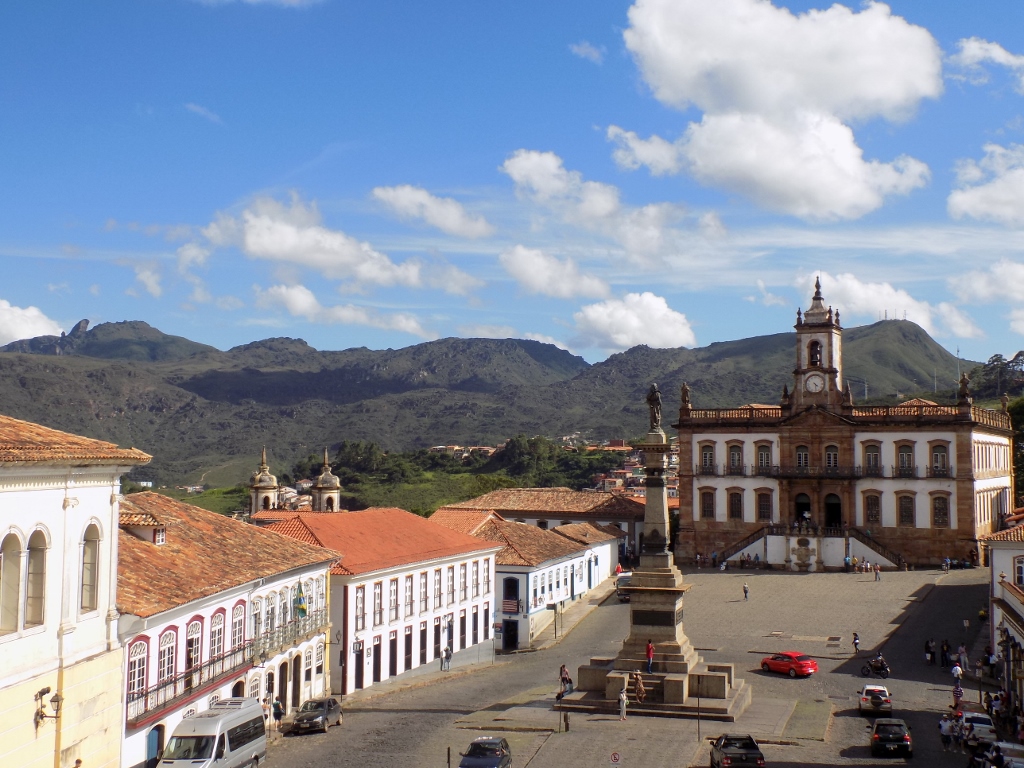 View across the Square and the Monument to Tiradentes; at the other side of the square there is the Museum of the Inconfidência and to the left there are tops of the towers of the Church of St Francis of Assisi
View across the Square and the Monument to Tiradentes; at the other side of the square there is the Museum of the Inconfidência and to the left there are tops of the towers of the Church of St Francis of Assisi
Because of the morning hassle about the money and the coach transportation we had only about four hours in Ouro Preto and we did manage to visit most of the most important sights, even sitting down in a café where we had a cold chocolate and a tasty cake, but it would certainly have been better if we had had at least one more hour.
Talking about cold chocolate, I noticed that chocolate was very popular in this town and there were many artisanal shops and confectionaries that offered products made of chocolate and different variations of the matter.
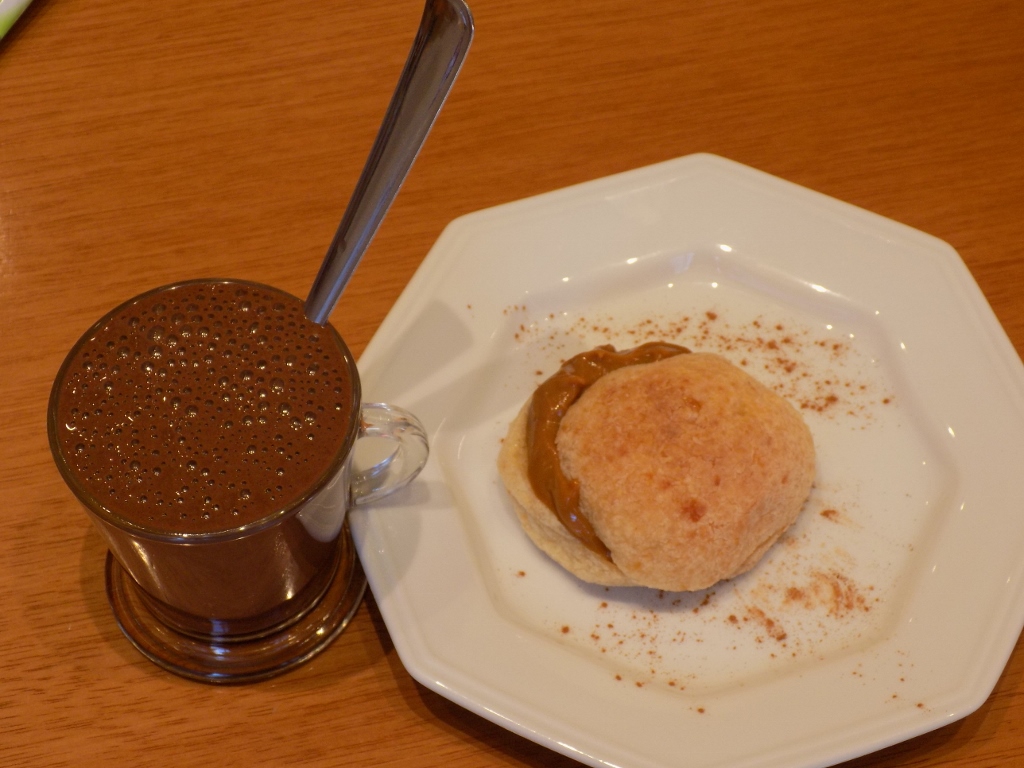 Cold chocolate and a cheesy bread roll with caramel, an unusual, but very tasty combination
Cold chocolate and a cheesy bread roll with caramel, an unusual, but very tasty combination
We spent the little time we had left walking casually around the very centre of Ouro Preto. When the gold mines were exhausted in the 19th century, the town lost its influence, but the evidence of its prosperity has survived. On the other hand, because of the isolation of the place, there was an economic stagnation and therefore on account of the lack of investments and development almost nothing changed for the good part of the 19th century and during the 20th century. If I may say, fortunately, for thus today we have an exceptionally attractive and picturesque little town.
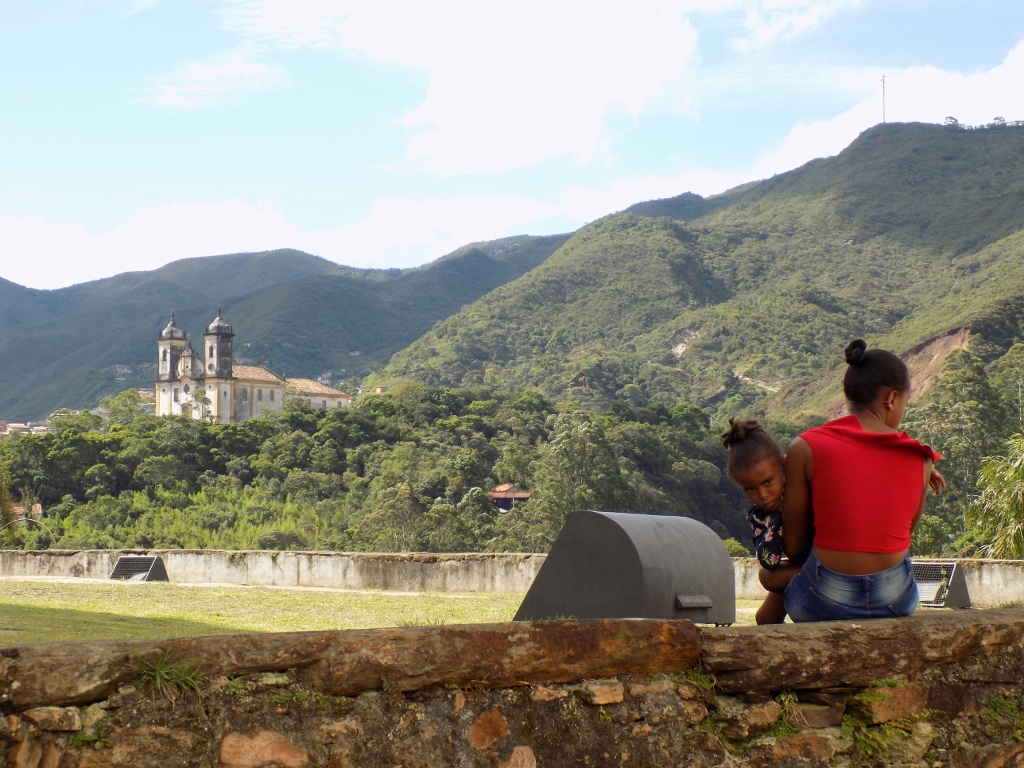 Details from Ouro Preto
Details from Ouro Preto
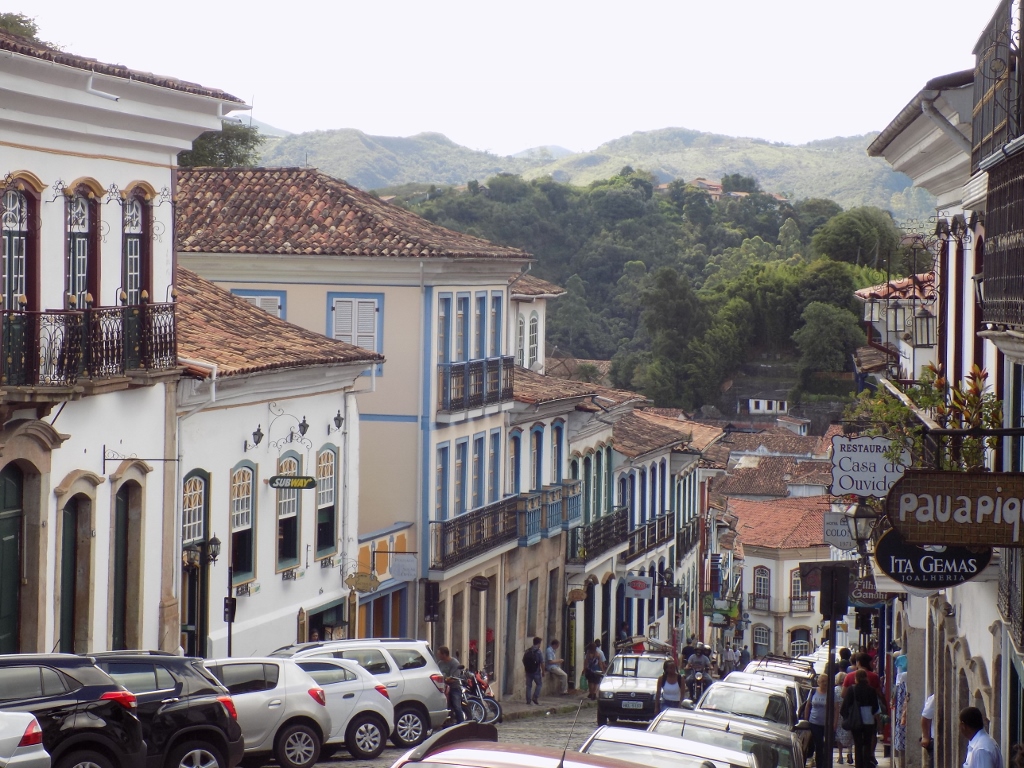 Details from Ouro Preto
Details from Ouro Preto
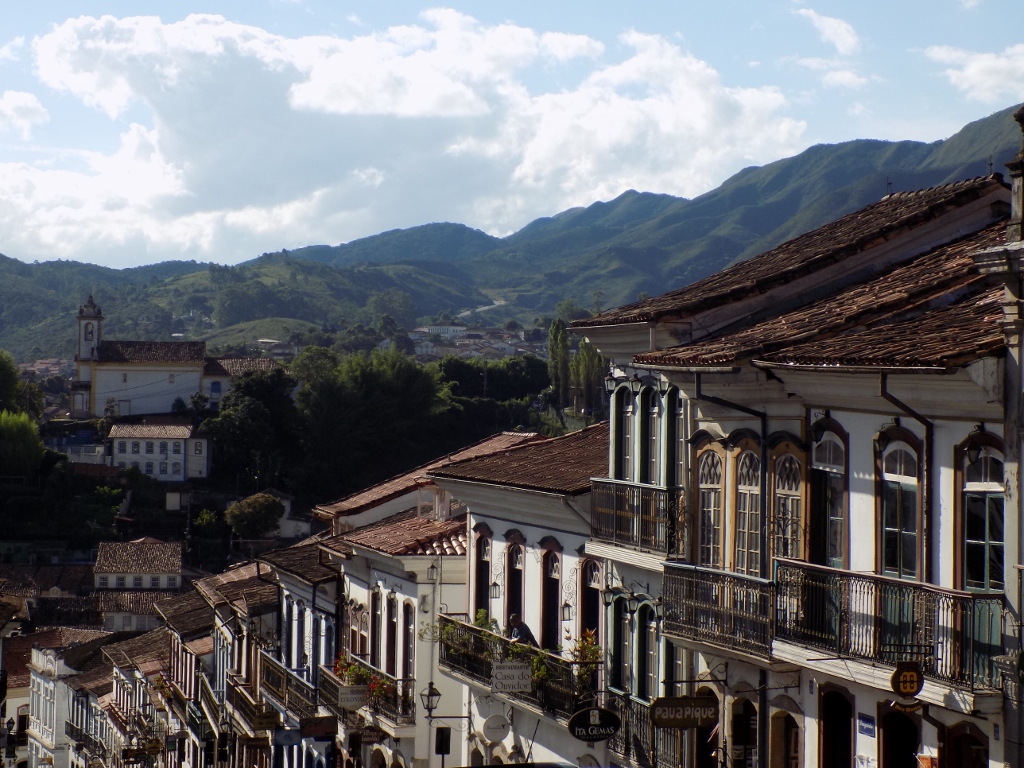 Details from Ouro Preto
Details from Ouro Preto
As I’ve said, it was precisely Ouro Preto that served as the capital of this federal state of Brazil, but today it is Belo Horizonte that is the capital. The name of the city means “Beautiful horizon” and in the past it was possible to see the horizon. Today, not that much, unless you are positioned somewhere high up. So, the following morning, while we were getting ready to go on a new excursion, I made a couple of photos from our hotel room. Just to give you an idea about the appearance of the centre of this large city. Officially, Belo Horizonte has around 2.5 million inhabitants, making it the sixth largest city in Brazil, but with the suburbs and different other parts, it is the third largest city in Brazil with almost 6 million inhabitants.
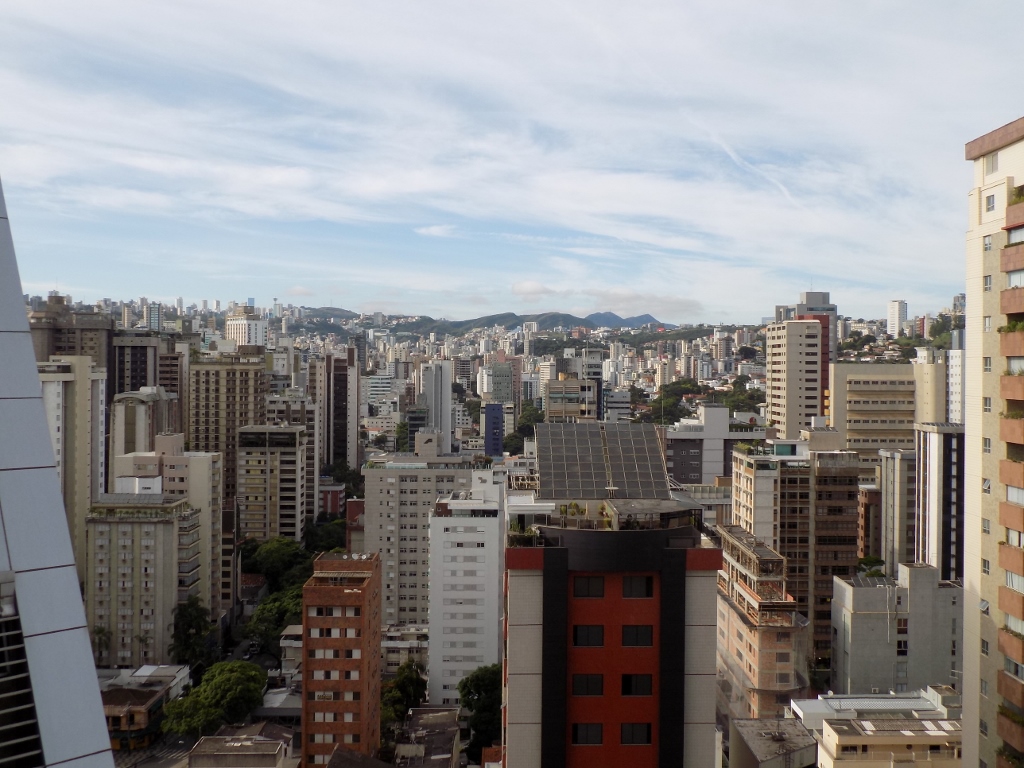 Belo Horizonte: view from the hotel
Belo Horizonte: view from the hotel
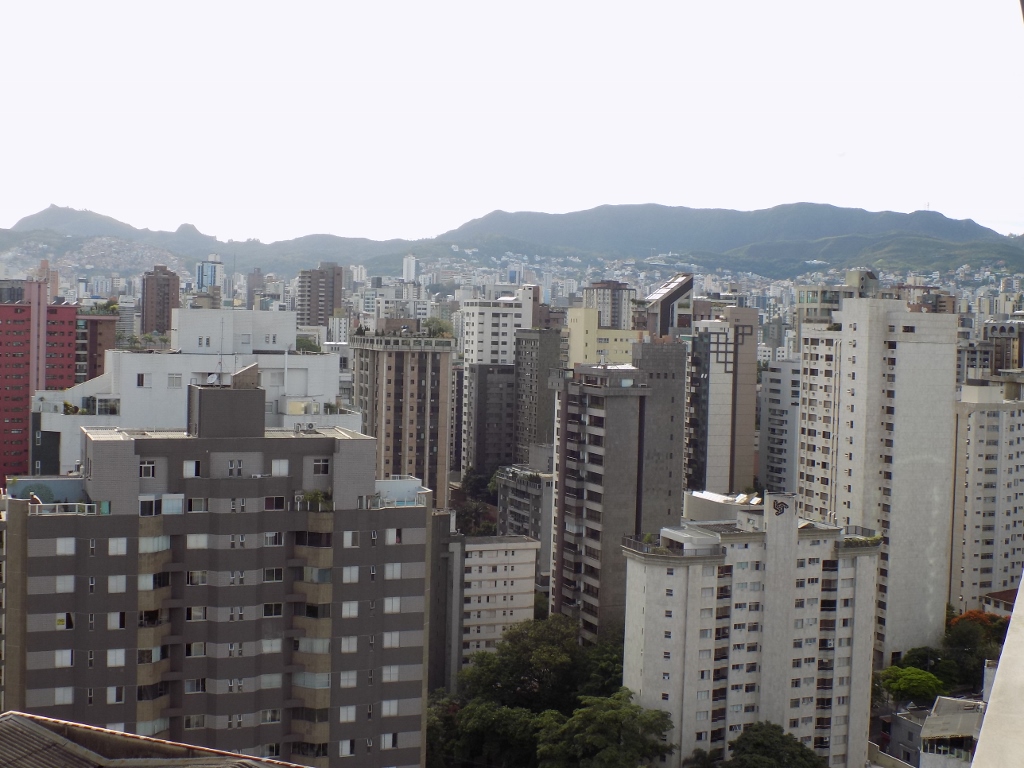 Belo Horizonte: view from the hotel
Belo Horizonte: view from the hotel
So, on this day, we went again on an excursion using a local coach and in order to do that we had bought the tickets the night before when we returned from Ouro Preto.
When one loves something, they are then prepared to make the sacrifice. Thus, on this day, I improved my previous record from Peru where I spent 3.5 hours on a coach one way and then the other as well just to see one interesting thing and that time it was all about a museum (https://www.svudapodji.com/en/lima-and-north-peru-peru-and-bolivia-summer-of-2005-part-2/). This time, however, Sneža and I spent 5 hours one way and afterwards the same amount of time for the return journey within a single day just to be able to spend some 3.5 hours in a small town. Still, this was not just any odd town. This was Diamantina that is inscribed on the UNESCO’s World Heritage List. As it may be presumed from the name itself, there used to be diamond mines in the area surrounding the town.
To a certain degree, it resembles Ouro Preto, it is picturesque and it spreads across steep slopes, its streets are made of cobbled stones and it has houses and churches from the 18th and the 19th centuries. Ouro Preto is certainly more impressive, but it was, after all, the capital of the state of Minas Gerais. Diamantina is smaller, but certainly very pretty and interesting in its own way.
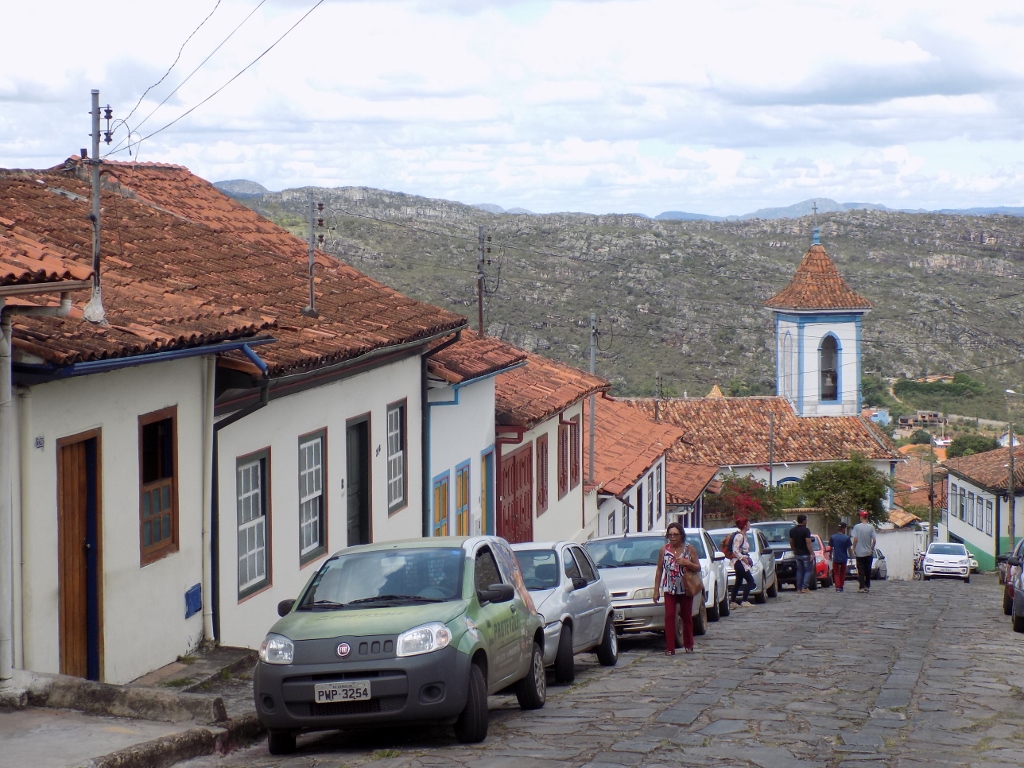 Diamantina and its surroundings
Diamantina and its surroundings
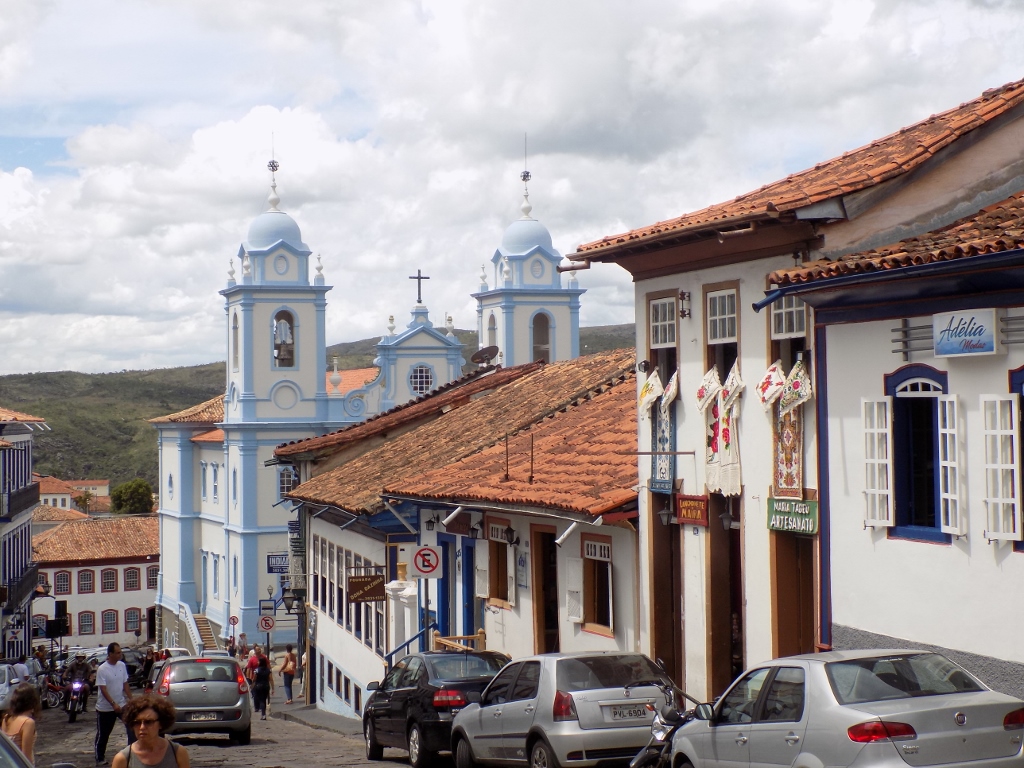 Santo Antônio Cathedral in Diamantina
Santo Antônio Cathedral in Diamantina